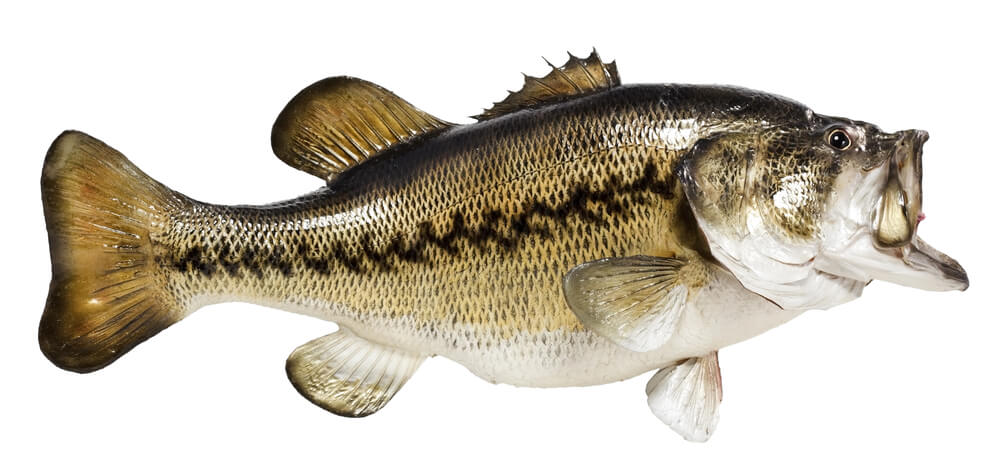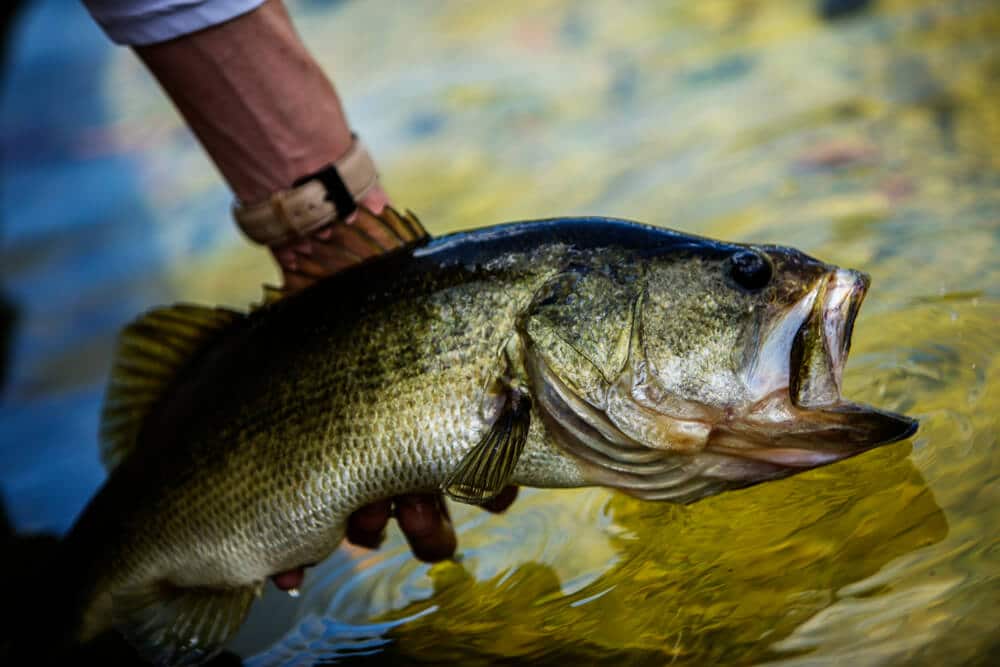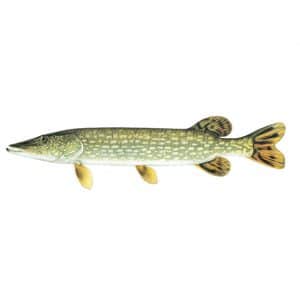Largemouth Bass
The Largemouth Bass, a freshwater fish primarily found in North America is a species known for its characteristics and behaviors. One of its features is a stripe that runs along its body, accompanied by a deeply forked tail and two distinct dark spots, above its pectoral fins. These physical traits are identifiers for this species especially when observed in their natural environment.

This type of bass which includes varieties like Smallmouth Bass and Northern Pike is commonly referred to as “Black Bass” due to its coloring. The largemouth bass is famous for its migrations across waterways in North America during the early spring spawning season within the United States. Male largemouth basses play a role in reproduction; they create nests by digging holes and carefully arranging branches, rocks and aquatic plants. These nests serve as breeding grounds where females deposit eggs that are then fertilized by the bass.

With a length of up to 17 inches (43 cm) and weighing much as 8 pounds (3.5 kg) largemouth basses are formidable predators. Their diet consists of fish, amphibians, small mammals, minnows and crayfish. Due to their vulnerability to stress and injury when caught by anglers they are often the focus of catch and release fishing—a sport, among fishing enthusiasts.
The largemouth bass, known for its ” mouth ” plays a role, in its hunting strategy by creating a strong suction force to catch prey. Interestingly although many subspecies may look similar they can be distinguished by analyzing the contents of their stomachs and examining the morphology of their scales.
The largemouth bass holds a significance as a state fish or symbol in U.S. States, including Georgia, Indiana, Kentucky, Mississippi, North Carolina, Tennessee, Illinois Kansas and Ohio. This species thrives in freshwater environments such as rivers, lakes and streams. Can be found in both temperate and tropical climates. However it is at risk due to climate change which could lead to shifts in its distribution as temperatures change.
From a perspective the largemouth bass is highly valued for both fishing and culinary purposes due to its mild flavor and firm texture. However it is often mistaken for species such, as “bigmouths” or “bowfin” which’re completely different. Bass fishing competitions are attracting anglers who have the chance to win cash prizes for catching the largest fish.
Different types of largemouth bass, such, as the northern, Florida, southern and Oswego bass differ in their ability to adapt and their dietary preferences. The Florida variant is particularly popular, in fish stores because it is easy to care for in both aquariums and ponds.


